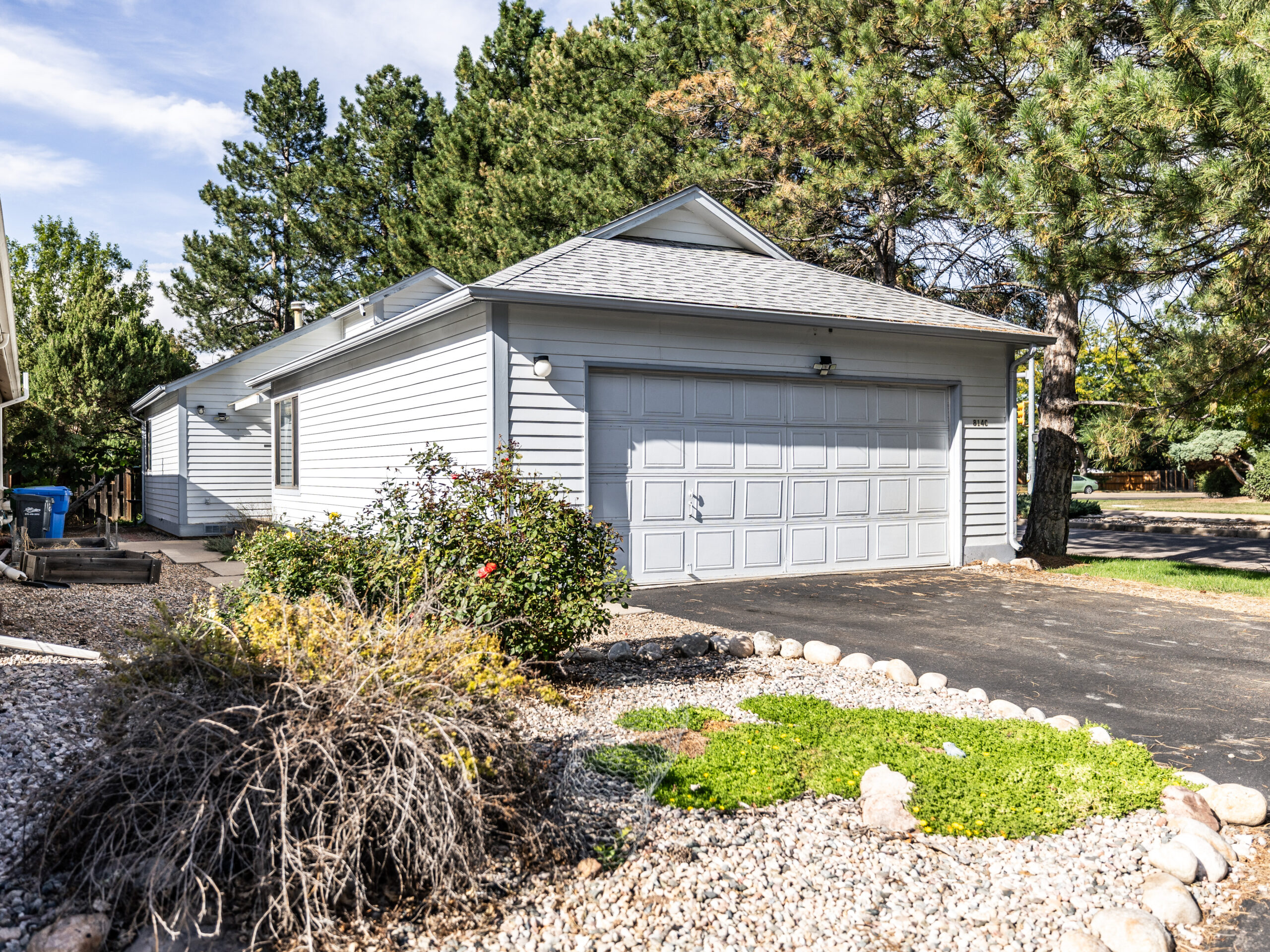Housing Costs and Unstoppable Demographics
by Osman Parvez
—-
From the New York Times, Housing Cost Consumed More of Paychecks in 2006:
Nationally, half of renters and more than one third of mortgage holders — 37 percent, up from 35 percent in 2005, or a rise of more than 1.5 million households — spent at least 30 percent of their gross income on housing costs, the level many government agencies consider the limit of affordability.
The article included the map below, showing the percentage of homeowners (with mortgages) who spend more than 30 percent of their income on housing.
Looking at the map, I was reminded of how a friend used to refer to demographics as “unstoppable” drivers of demand, short of an epidemic or natural catastrophe. Could demographics explain some of the differences between the states? I started doing some statistical digging of my own.
Here’s a few facts I found about Colorado’s population.
- 24th most populous state
- 10th youngest by median age
- Segmenting the population, Colorado is first in the 18 to 64 bracket (sometimes called economically productive group)
- 45th for 65 years old+
As I dug around the Census website, one of the statistical tables I found was called the “old-age dependency ratio.” It’s a number derived by dividing the population 65 and over by the 18-to-64 population and multiplying by 100. The idea is to show what fraction of the population is over the age of 65 as a percentage of those that are economically productive. Obviously, many over the age of 65 are economically productive, but I think it’s still a good measure for the most part. Below is a map I created from the information. The darker the color, the higher the old age dependency ratio.
Looking at the map, there’s quite a difference between states. Most people know that Florida has a high population of seniors, and no surprise, it’s also the state with the highest dependency ratio (27.5%). A high percentage of people in Florida (45%) are also paying more than 30 percent of their income towards home ownership. Contrast that with Colorado, where you’ll find low dependency (15.4%) but still a high percentage of owners (39%) paying more than 30 percent of their income towards housing.
Although Florida and Colorado both have high percentages of people who pay more than 30% of their income on housing, is the age of their respective populations a factor to consider?
Here’s an interesting contrast. Based on demographics, Colorado may have more income generating stability and growth potential over time. In Florida, 40.3% of owners are 44 years old or older and 38.7% are 65 or older. Contrast that with Colorado where 31.9% of owners are 44 years old or older but only 9.7% are 65 or older. It seems that owners in Colorado are much younger and thus have greater “earn-out” potential.
I believe there will be greater real estate market sustainability and resilience in areas that have a younger working population. As residents cross the 65 year old threshold, the typical age of retirement, income typically begins to drop. Seniors pay less in tax but require substantially more medical care and other services, something that will require increasing amounts of state and federal dollars to fund (particularly given the increasing numbers of Americans without health care insurance). Meanwhile, Colorado is experiencing strong growth, a more diversified economic base, a tight labor market (about 1% below the national unemployment average), a young and relatively health population (thinnest state), and strong population growth (in the top 10, numerically).
Obviously, there is a lot to worried about in real estate. Among other things, tighter credit, the possibility of a recession in 2008, and sub prime’s widening destructive path through the capital markets. Yet, I’m a fan of taking the long view. While there will continue to be short term gyrations, perhaps even a more substantial real estate market downturn, the long term economic picture in Colorado looks bright.
image: The New York Times
—-
Want to get blog updates via email? Click HERE.
Ready to buy or sell? Schedule an appointment or call 303.746.6896.
You can also like our Facebook page or follow us on Twitter.
As always, your referrals are deeply appreciated.
—
The ideas and strategies described in this blog are the opinion of the writer and subject to business, economic, and competitive uncertainties. We strongly recommend conducting rigorous due diligence and obtaining professional advice before buying or selling real estate.
Housing Costs and Unstoppable Demographics
by Osman Parvez
—-
From the New York Times, Housing Cost Consumed More of Paychecks in 2006:
Nationally, half of renters and more than one third of mortgage holders — 37 percent, up from 35 percent in 2005, or a rise of more than 1.5 million households — spent at least 30 percent of their gross income on housing costs, the level many government agencies consider the limit of affordability.
The article included the map below, showing the percentage of homeowners (with mortgages) who spend more than 30 percent of their income on housing.
Looking at the map, I was reminded of how a friend used to refer to demographics as “unstoppable” drivers of demand, short of an epidemic or natural catastrophe. Could demographics explain some of the differences between the states? I started doing some statistical digging of my own.
Here’s a few facts I found about Colorado’s population.
- 24th most populous state
- 10th youngest by median age
- Segmenting the population, Colorado is first in the 18 to 64 bracket (sometimes called economically productive group)
- 45th for 65 years old+
As I dug around the Census website, one of the statistical tables I found was called the “old-age dependency ratio.” It’s a number derived by dividing the population 65 and over by the 18-to-64 population and multiplying by 100. The idea is to show what fraction of the population is over the age of 65 as a percentage of those that are economically productive. Obviously, many over the age of 65 are economically productive, but I think it’s still a good measure for the most part. Below is a map I created from the information. The darker the color, the higher the old age dependency ratio.
Looking at the map, there’s quite a difference between states. Most people know that Florida has a high population of seniors, and no surprise, it’s also the state with the highest dependency ratio (27.5%). A high percentage of people in Florida (45%) are also paying more than 30 percent of their income towards home ownership. Contrast that with Colorado, where you’ll find low dependency (15.4%) but still a high percentage of owners (39%) paying more than 30 percent of their income towards housing.
Although Florida and Colorado both have high percentages of people who pay more than 30% of their income on housing, is the age of their respective populations a factor to consider?
Here’s an interesting contrast. Based on demographics, Colorado may have more income generating stability and growth potential over time. In Florida, 40.3% of owners are 44 years old or older and 38.7% are 65 or older. Contrast that with Colorado where 31.9% of owners are 44 years old or older but only 9.7% are 65 or older. It seems that owners in Colorado are much younger and thus have greater “earn-out” potential.
I believe there will be greater real estate market sustainability and resilience in areas that have a younger working population. As residents cross the 65 year old threshold, the typical age of retirement, income typically begins to drop. Seniors pay less in tax but require substantially more medical care and other services, something that will require increasing amounts of state and federal dollars to fund (particularly given the increasing numbers of Americans without health care insurance). Meanwhile, Colorado is experiencing strong growth, a more diversified economic base, a tight labor market (about 1% below the national unemployment average), a young and relatively health population (thinnest state), and strong population growth (in the top 10, numerically).
Obviously, there is a lot to worried about in real estate. Among other things, tighter credit, the possibility of a recession in 2008, and sub prime’s widening destructive path through the capital markets. Yet, I’m a fan of taking the long view. While there will continue to be short term gyrations, perhaps even a more substantial real estate market downturn, the long term economic picture in Colorado looks bright.
image: The New York Times
—-
Want to get blog updates via email? Click HERE.
Ready to buy or sell? Schedule an appointment or call 303.746.6896.
You can also like our Facebook page or follow us on Twitter.
As always, your referrals are deeply appreciated.
—
The ideas and strategies described in this blog are the opinion of the writer and subject to business, economic, and competitive uncertainties. We strongly recommend conducting rigorous due diligence and obtaining professional advice before buying or selling real estate.
Share This Listing!
More about the author
Osman Parvez
Owner & Broker at House Einstein as well as primary author of the House Einstein blog with over 1,200 published articles about Boulder real estate. His work has appeared in the Wall Street Journal and Daily Camera.
Osman is the primary author of the House Einstein blog with over 1,200 published articles about Boulder real estate. His work has also appeared in many other blogs about Boulder as well as mainstream newspapers, including the Wall Street Journal and Daily Camera. Learn more about Osman.
Work with
House Einstein
Thinking about buying or selling and want professional advice?
Call us at 303.746.6896
Your referrals are deeply appreciated.















